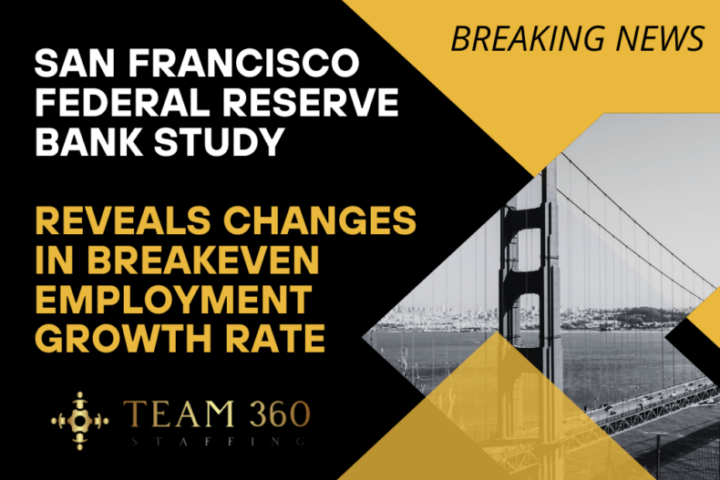In its 2024 Employment Outlook report, the Organisation for Economic Cooperation and Development (OECD) projects that it will grow at 0.% annually in its member states. The report discusses varied economic and labor market developments and mentions the effects of trying to achieve zero net emissions.
In May 2024, the total OECD area employment was 662 million, a 25% rise from 2000. The jobless rate in May 2024 was slightly higher for females than males at 4.9%. After struggling initially, real wages are getting back to normal from the drop during 2022 and early 2023. Real wages increased yearly on average by 3.5% across most OECD countries from early 2024.
- Post-pandemic improvement in employment rates is more significant for women than men.
- Real earnings for many countries are still lower than in 2019.
- The OECD unemployment rate in May was around 1 out of every 20 persons.
Increase in Minimum Wages
By May of this year, minimum salaries had grown by nearly a tenth compared with five years ago across OECD nations due to nominal pay hikes to support less paid staff during times of high depreciation of money's intrinsic value. Wage growth seems impactful, particularly among less skilled manual jobs or blue-collar indentured servitude.
Transition Towards Clean Energy, Impact On the Workforce
The May report emphasizes the expected impacts of aggressive global warming prevention strategies on world labor markets, aiming for zero net greenhouse gases by 2050. Secretary General Mathias Cormann of the OECD emphasized the need for policies promoting career transition, upskilling programs, and green-focused innovations to help labor victims of environmental transition.
- About 1 in 5 workers in OECD nations have eco-friendly jobs.
- Jobs in every pollutant industry are only 7% of all jobs but are excessive greenhouse gases.
- Jobs in these highly polluting industries face significant income loss after losing their job.
Due to the environmental shift, we may see some job losses in industries known for high pollution, while new opportunities may be created in green sectors. Interestingly, these industries widely accepted as significant factors causing ecosystem imbalance were found to provide jobs to only around seven percent of workers, while the sectors focusing on reducing pollution employed one-fifth of the total labor force.
American Job Market and Economic Predictions
The US labor market is going strong. The American unemployment rate will remain at nearly four percent until late 2025. Regardless, there's a faster rise than the inflation rate; real wages still need to touch precovid levels. Besides, A ban imposed by the US trade body on companies restraining employees from working for competitors starting from the second quarter of last year might improve competition, resulting in enhanced economic activity and a further rise in salaries.
- In the United States, employment rates will likely stick around four percent until the end of next year.
- The first quarter saw an annual hike of one percent in actual earnings.
- In April last year, Non-Compete clauses were banned by the Federal Trade Commission.
In addition to this favorable business condition, the American economy is estimated to grow further, with GDP predicted to rise by 2.6% this year and 1.8% by next year. Nonetheless, new job options will be less than one percent annually. Despite steady labor force participation, the ratio of employed people to the total population has slightly decreased.
Environment-Friendly World Policies and Their Result
Moving towards a No-net gas emission goal will also significantly influence US jobs. Almost 20.6% of workers in the US are associated with occupations directly or indirectly linked to green development, with several posts yet to come up. At the same time, it includes a fifth of total US employment currently working in highly polluting industries. Moreover, policies encouraging pay continuity and change of jobs are essential to address cost implications on employment due to the absence of action in the face of changing global climate status.
- Indiana has employed most employees in eco-friendly roles across the United States.
- Wyoming includes most jobs involving high-emission activities.
- Around five out of twenty-five American laborers are highly affected by the discomfort of the heated environment.
Across OECD countries, pricing for carbon emissions due to energy consumption has been rising, except in the US, where it’s below average due to an inflation reduction policy passed four years ago, reflecting the local approach towards prevention from temperature rise, emphasizing the promotion of clean power use and technology.
Fraud Closure
The OECD’s Labor Market Prediction Report 2024 provides an image showing a recovery focus from renewable industries while still flagging particular areas requiring attention, such as hefty polluting sectors. Yet there remain multiple hindrances; specific policies & reshaping training programs can help move towards a sustainable, active economy comfortably. An era characterized by strong economic growth and stability seems promising amidst the recovery of real wages and an increased competitive labor environment.



